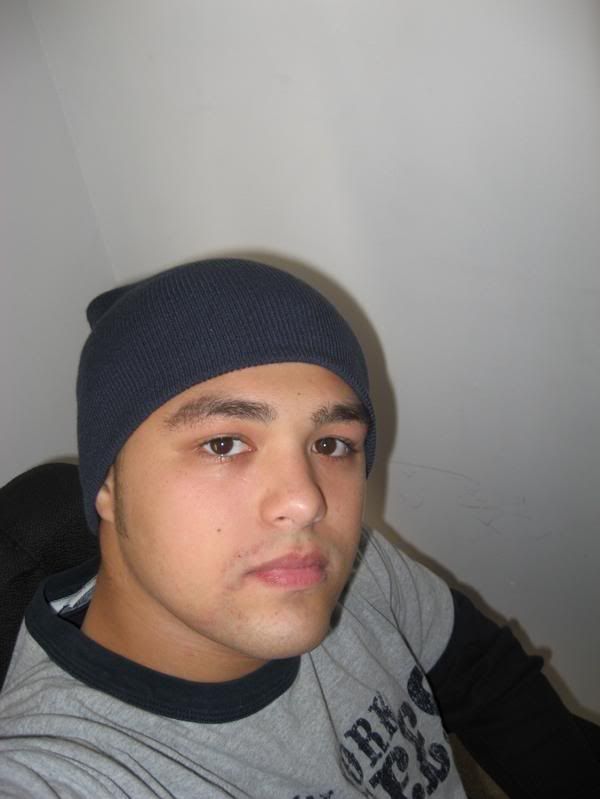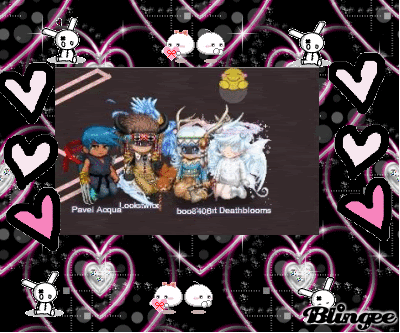- Lookstwice's Gallery
-

- View Profile
- View Fans
- Send Private Message
-
Artist Info:
the man behind the avi me <br />
<br />
<br /> <br />
<br />
<br />
<br /> <br />
<br />
<br /> <br />
<br />
<br /> <br />
<br />
<br /> <br />
<br />
<br /> <br />
<br />
<br /> <br />
<br />
<br />
<br />
<br />
<br />
<br />
<br />
A lonesome warrior stands in fear of what the future brings,<br />
he will never hear the beating drums or the songs his brothers sing.<br />
<br />
Our many nations once stood tall and ranged from shore to shore<br />
but most are gone and few remain and the buffalo roam no more.<br />
<br />
We shared our food and our land and gave with open hearts,<br />
We wanted peace and love and hope, but all were torn apart.<br />
<br />
All this was taken because we did not know what the white man had in store,<br />
They killed our people and raped our lands and the buffalo roam no more.<br />
<br />
But those of us who still remain hold our heads up high, and the spirits of<br />
the elders flow through us as if they never died.<br />
<br />
Our dreams will live on forever and our nations will be reborn, our bone and<br />
beads and feathers all will be proudly worn.<br />
<br />
If you listen close you will hear the drums and songs upon the winds, and in<br />
the distance you will see....the buffalo roam again.<br />
<br />
Submitted by Tommy Flamewalker Manasco<br />
<br />
NativeAmericans.com - Owl Chief - Tribute to the Great Spirit<br />
<br />
<br />
LONG BEFORE the white man set foot on American soil, the American Indians, or rather the Native Americans, had been living in America. When the Europeans came here, there were probably about 10 million Indians populating America north of present-day Mexico. And they had been living in America for quite some time. It is believed that the first Native Americans arrived during the last ice-age, approximately 20,000 - 30,000 years ago through a land-bridge across the Bering Sound, from northeastern Siberia into Alaska. The oldest documented Indian cultures in North America are Sandia (15000 BC), Clovis (12000 BC) and Folsom (8000 BC)<br />
<br />
Although it is believed that the Indians originated in Asia, few if any of them came from India. The name "Indian" was first applied to them by Christopher Columbus, who believed mistakenly that the mainland and islands of America were part of the Indies, in Asia.<br />
<br />
So, when the Europeans started to arrive in the 16th- and 17th-century they were met by Native Americans, and enthusiastically so. The Natives regarded their white-complexioned visitors as something of a marvel, not only for their outlandish dress and beards and winged ships but even more for their wonderful technology - steel knives and swords, fire-belching arquebus and cannon, mirrors, hawkbells and earrings, copper and brass kettles, and so on.<br />
<br />
However, conflicts eventually arose. As a starter, the arriving Europeans seemed attuned to another world, they appeared to be oblivious to the rhythms and spirit of nature. Nature to the Europeans - and the Indians detected this - was something of an obstacle, even an enemy. It was also a commodity: A forest was so many board feet of timber, a beaver colony so many pelts, a herd of buffalo so many robes and tongues. Even the Indians themselves were a resource - souls ripe for the Jesuit, Dominican, or Puritan plucking.<br />
<br />
It was the Europeans' cultural arrogance, coupled with their materialistic view of the land and its animal and plant beings, that the Indians found repellent. Europeans, in sum, were regarded as something mechanical - soulless creatures who wielded diabolically ingenious tools and weapons to accomplish mad ends.<br />
<br />
The Europeans brought with them not only a desire and will to conquer the new continent for all its material richness, but they also brought with them diseases that hit the Indians hard. Conflicts developed between the Native Americans and the Invaders, the latter arriving in overwhelming numbers, as many "as the stars in heaven". The Europeans were accustomed to own land and laid claim to it while they considered the Indians to be nomads with no interest to claim land ownership. The conflicts led to the Indian Wars, the Indian Removal Act empowered by President Andrew Jackson in 1830 and other acts instituted by the Europeans in order to accomplish their objectives, as they viewed them at the time. In these wars the Indian tribes were at a great disadvantage because of their modest numbers, nomadic life, lack of advanced weapons, and unwillingness to cooperate, even in their own defense.<br />
<br />
The end of the wars more or less coincided with the end of the 19th century. The last major war was not really a war, it was a massacre in 1890 where Indian warriors, women, and children were slaughtered by U.S. cavalrymen at Wounded Knee, South Dakota, in a final spasm of ferocity.<br />
<br />
A stupefying record of greed and treachery, of heroism and pain, had come to an end, a record forever staining the immense history of the westward movement, which in its drama and tragedy is also distinctively and unforgettably American.<br />
<br />
Undersigned being an European emigrating to the U.S. during the latter part of the 20th century, cannot fully comprehend what happened during the past few centuries. I am sure many descendants of emigrants as well as many Native Americans feel the same way. We are all a product of our time and the circumstances prevalent at the time. If I had lived with the Europeans in America during the 19th century, would I have embraced what was going on then? If I had lived with the Germans in the 1930s and 40s, would I have embraced what was going on in Germany then? If I had lived in Scandinavia during medieval time witnessing the horrors of slavery and killings, would I have embraced what was going on then? (The Nordic countries practiced slavery during the middle ages, a master could for any reason kill his slave. Abolished in 1335)<br />
<br />
These are hard questions for anyone to honestly answer. It is easy to toss around opinions now, at the end of the 20th century being conveniently removed from circumstances and conditions in a distant and foreign time.<br />
<br />
This website will try to present as a true and accurate picture as possible of the past, but not dwell on it. However, it is important for one sole reason and that is to learn from the past and move into the 21st century as better human beings. After all, we are ONE people under God and we can only look back to the past as what it is - history. Now we attempt to cooperate to the best of our ability in the present and we are looking forward to the future for a better world. Let us once again cross the Bering land-bridge and sail the Mayflower, but this time together for the common goal of building up mutual respect and trust.<br />
<br />
The best way to accomplish this goal, we believe, is for this website to contribute by presenting links to the most sincere, factual, reliable and honest web-sites around on this subject and let interested parties actively participate. We will try to cover all aspects of our common history in regards to the history and development of the west. You will find many Native American web-sites with an abundance of facts and sources of information here. Please join in if you think you have something to contribute! <br />
<br />
National American Indian Heritage Month, 2004 Presidential Proclamation<br />
<br />
NativeAmericans.com - Chief Joseph of the Nez Perce Tribe<br />
<br />
<br />
<br />
<br />
<br />
<br />
<br />
<br />
<br />
<br />
<br />
<br />
<br />
<br />
The Nanticoke Lenni-Lenape Indians Of New Jersey<br />
<br />
The Nanticoke Lenni-Lenape Indians of New Jersey elected its first Tribal Council in 1978, becoming the largest active Tribe of Indians in the State of New Jersey. The Tribe has a membership of over fifteen hundred (1500) families with many more unaccounted for. The majority of these families are involved in public awareness of their cultural background, that has been passed down through the years.<br />
<br />
The origin of the Nanticoke People began along the Nanticoke River in Southeastern Delaware and the Eastern Shore of Maryland. Migration began in the early 1600's from Eastern Shore Maryland through Southeastern Delaware, along the shores of New Jersey and as far North to Canada and Westward into Oklahoma. As a result of this migration, the Nanticoke People united with the Lenni-Lenape Indians already living in New Jersey.<br />
<br />
According to the Wallum Ollum, which is the religious history of the Lenni-Lenape Indians, we learn that the Lenni-Lenape People migrated to New Jersey from the "North Country" crossing the Mississippi River. Unfortunately we cannot pinpoint the exact time the Lenni-Lenape Indians settled here, since man has lived in New Jersey for at least ten thousand (10,000) years.<br />
<br />
The Lenni-Lenape Indians are known by the Algonkin Tribes as the "Original People", "Grandfather", or "Men of Men", while the Nanticoke Indians are known as the "Tidewater People". The descendants of these two Tribes are still in existence today and living in New Jersey, Delaware and through-out the United States.<br />
<br />
The Native Americans along with other minority groups have been needing representation and equal rights in this land for many decades. It was not until 1924 that Congress recognized Native American people as citizens. Also on August 13, 1978 Congress signed into law the "American Indian Religious Freedom Act", this law gave the Native Americans the right to practice their religious beliefs.<br />
<br />
Now along with other Native Americans we have begun the fight to preserve our culture. We are actively involved in the teaching of dancing, drumming, and Indian crafts to both young and old.<br />
<br />
The Nanticoke Lenni-Lenape Indians host an annual Pow-Wow the second weekend in June. The Pow-Wow is open to the public. The Pow-Wow presents an opportunity for the Nanticoke Lenni-Lenape Indians and other neighboring Indian Tribes to display, practice, and share their skills acquired through their rich heritage.<br />
<br />
The headquarters of the Nanticoke Lenni-Lenape Indians of New Jersey, Inc. is presently located at 18 East Commerce Street, Bridgeton, New Jersey. The office administers to the needs of Native Americans through housing, jobs, food, clothing, and education. We also maintain a history and a genealogy library of our Tribe. Stop in and visit with us and browse through our gift shop, featuring hand-crafted items done by many of our local Indian People. Beads and other Native American Craft supplies may also be purchased in our shop.<br />
<br /> <br />
<br />
<br />
<br />
<br />
<br />
<br /> <br />
<br />
<br /> <br />
<br />
<br /> <br />
<br />
<br /> <br />
<br />
<br /> <br />
<br />
<br /> <br />
<br />
<br /> <br />
<br />
<br /> <br />
<br />
<br />
my uncle Urie Ridgeway <br />
<br /> <br />
<br />
<br />
my uncles son and danni glover <br />
<br />
- Avg. rating:
- 1 Fans
- On The Clouds
- Painting And Drawing
- 12 recent comments
-
Comments (0 Comments)
No comments, click on the Add Comment button to add a comment.




